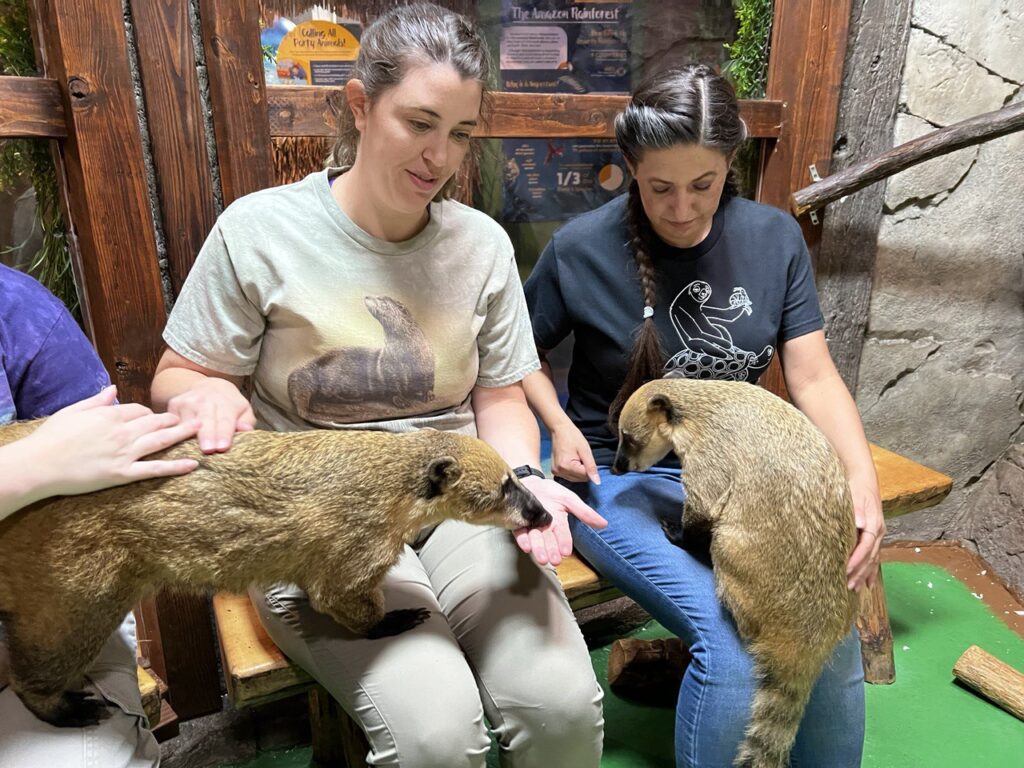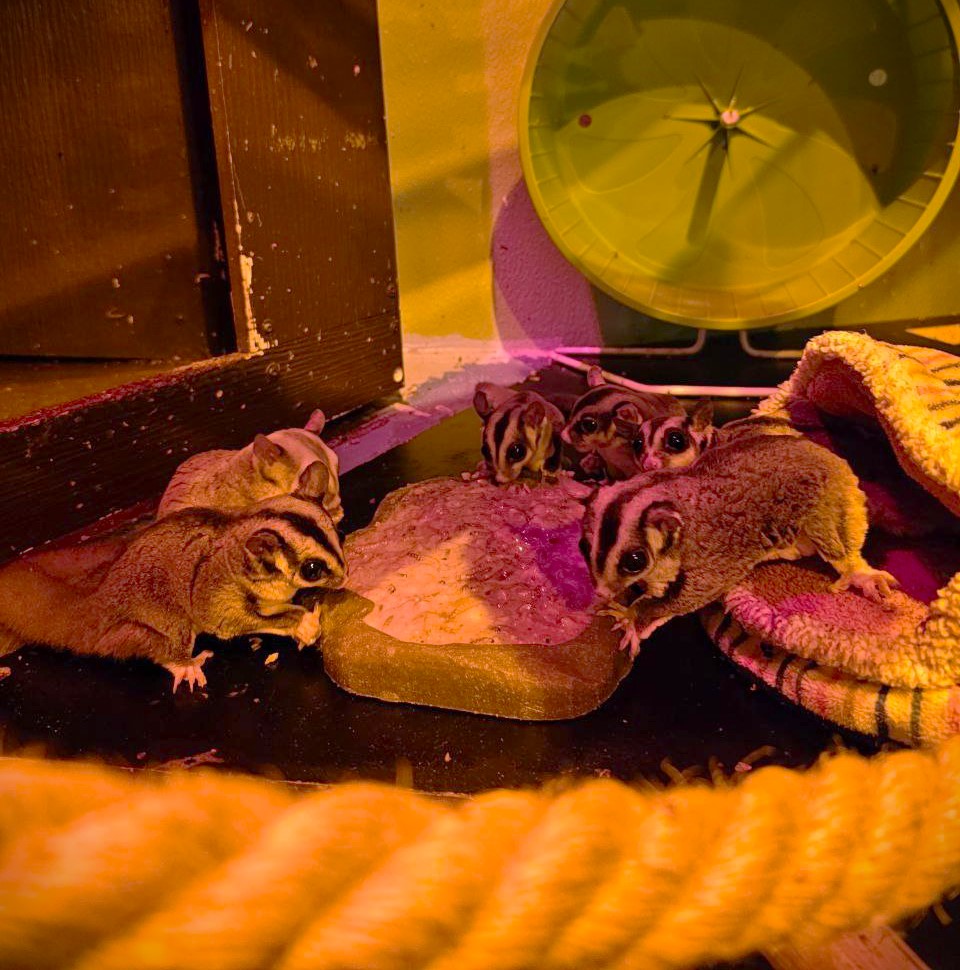SeaQuest Guide to Snakes!
Share it on:

It’s no surprise that the overall consensus about snakes is a bit negative. About 90% of people will admit they are scared of snakes. However, snakes are great creatures and they play a vital role in the ecosystems of the world that we live in. World Snake Day is celebrated every year in July to raise awareness about the different types of snake species and the important place they have in maintaining the ecological balance in nature. Here’s a guide with some great information about snakes and what you can expect if you ever meet a snake in real life!
What is World Snake Day?
World Snake Day was created to help people learn more about these reptiles and how much they contribute to the world as we know it. Wildlife enthusiasts, educators, and advocates take time to recognize the vast species of snakes and inform the public about their history, natural habitats, and how to protect those that may be endangered. Despite facing many of the same threats that affect other wildlife species – habitat loss and degradation, global climate change, human activity, etc. – negative attitudes and misinformed public perceptions about snakes often make conservation efforts difficult.
How Many Species of Snakes Exist?
Snakes are one of the oldest creatures to ever exist on the planet. They have lived and thrived in various civilizations and climate environments over millions of years. There are approximately 3,500 species of snakes on earth. They can be found anywhere from the semi-frozen tundra of northern Canada to the green jungles of the Amazon. They are also found in most of the world’s oceans. They are sharp predators and play an important role in maintaining the balance of nature. Snakes are also fascinating because of their diversity and their appearance. Due to their prehistoric lineage, most people have no idea that modern reptiles did evolve from a specific species of ancient dinosaurs. Here’s a quick breakdown of the major groups of snakes we know today.
- Constrictors: Among the many sub-species in this group, boas and pythons are the most well-known and they fall into Boidae family of snakes. While they can have similar characteristics they can be confused with each other, both are large, non-venomous constrictors. Neither snake has changed much over the millions of years they have lived on Earth, so they’re considered pretty primitive. Boas mainly originate from areas in North and South America. Pythons originate from Africa, Australia, and Asia, and over time have migrated to the Americas. Constriction is how various snake species to kill or subdue their prey. The snake will strike at its prey and hold on tight. Then they wrap around the prey a few times creating the “constriction coil” The snake will monitor the prey’s heartbeat to ascertain when it is dead.
- Venomous: Snakes such as vipers, cobras, and rattlesnakes fall into this Serpentes sub-order. They produce venom which they use in self-defense or to kill their prey. Venom is typically delivered by injection using hollow or grooved fangs. The toxicity of snake venom is mostly measured by its danger to humans even though the snakes are specialized predators whose venom may be adapted specifically to incapacitate their preferred prey. So while some snakes may be highly dangerous to humans, it’s their natural habitat that dictates direct human injury or fatalities from a snakebite. For example, the Inland Taipan is regarded as the world’s most venomous snake but the species is known to be extremely shy and rarely strikes, and has not caused any known human fatalities. In contrast, snakes like Indian Cobra or Russell’s Viper are less venomous than the Inland Taipan. However, they are found in more populated areas and have closer proximity to humans so they tend to be more confrontational, thus leading to more deaths from snakebite. Species like the Black Mamba can show aggression when they feel threatened or in danger. They are known to deliver fatal doses of venom resulting in high human mortality rates.
- Non-Venomous: The largest group on the list, non-venomous snakes make up about 85% of all snake species in the world. Overall, they are completely harmless. Many of them serve a beneficial role by keeping ecosystems balanced by insects and vermin. Most non-venomous snakes have teeth, just like venomous snakes. The bite from a non-venomous snake may cause a small injury, but it will not poison a human. They kill their prey in various ways, some will pin their prey to the ground or chew it to kill it. Some just catch and swallow their prey alive. Some of the most notable non-venomous species are:
- Corn Snake
- Green Tree Snake
- Garter Snake
- Gopher Snake
- Rat Snake
Did You Know? Because of how wide a snake can separate their upper and lower jaw snakes can consume prey up to three times larger than the diameter of their head!
What is the Difference Between a Venomous and Non-Venomous Snake?
The most common way to tell the difference between venomous and non-venomous snakes is by looking at their head. Venomous snakes will typically have a triangular-shaped head, while non-venomous snakes will have a round head. Snakes such as rattlesnakes, copperheads, cottonmouths, and coral snakes are all considered pit vipers. This is because of the noticeable “pits” or holes on their heads. Each snake has two pits that appear on its snouts. These pits allow snakes to detect infrared radiation from prey or even detect predators. There is also a distinction between venomous and non-venomous snakes with their eyes. Much like a cat’s eye, venomous snakes have thin, black, vertical pupils surrounded by a yellow-green eyeball. Non-venomous snakes have round pupils.
What do Snakes Eat?
All snakes are considered carnivores which means they eat only meat. Snakes don’t eat vegetation or plants, so you won’t find a vegetarian snake anytime soon! Small snakes tend to consume a variety of insects and animals such as worms, lizards, frogs, and rodents. Very large snakes can eat bigger animals including rabbit, small deer, pigs, and monkeys.
Fun Snake Facts:
- They shed their skin three to six times a year.
- Only 1/8 of the known species in the world are venomous.
- Snakes rely on the environment to regulate their body temperature and spend a long amount of time in the sun for warmth.
- Most snakes are nocturnal.
- Snakes use their tongue to smell their air.
- While most snakes lay eggs, some give live birth.
- Snake venom has been studied for medical purposes for many years.
For more fun snake facts or to get a first-hand look at some of the snake species in this guide check out the amazing YouTube channel, The Reptarium, for some great animal videos on snakes!
Are Snakes Endangered?
Overall, most snakes are not critically endangered, however, some snake species have become threatened due to habitat destruction, urban development, disease, snake hunting, unsustainable trade, and the introduction of invasive species due to climate change. Currently, there are about a hundred snake species listed as Endangered on the IUCN Red List.
Do Snakes Make Good Pets?
Have you ever thought about having a pet snake? Snakes may not be the right pet for everyone, people should actually do a little more research before buying one. Ball Pythons, Corn Snakes, and Boa Constrictors are the most popular species humans keep as pets. Only those that have long-term plans to home a snake should make sure they have the time and resources required to give the attention and care needed for them to live long, healthy lives. Some things to consider are obtaining the means to provide the proper food and diet for a snake. Snakes eat rodents and mice, so you’ll need to consider the feeding process of owning a snake. Also keep in mind that snakes, like all other living things on earth, get sick. You’ll need to not only educate yourself on the types of illness a snake may acquire but find the proper vet care for that species of snake. Most importantly, snakes are docile creatures. If you’re looking for a pet to snuggle or play toys with, a snake is clearly not the best choice. However, there are families who have thoroughly enjoyed having a pet snake and the learning experience of having kids take care of a pet snake can be life-changing.
SeaQuest is committed to protecting our world’s oceans, wildlife, and endangered animals. We focus on how to be proactive in finding solutions. If you’d like to learn more about snakes or visit one, check out SeaQuest today or stop by any of the following locations: Utah, Las Vegas, Dallas-Fort Worth, Denver, Sacramento, Minneapolis, Connecticut, Lynchburg, New Jersey, and Atlanta.




